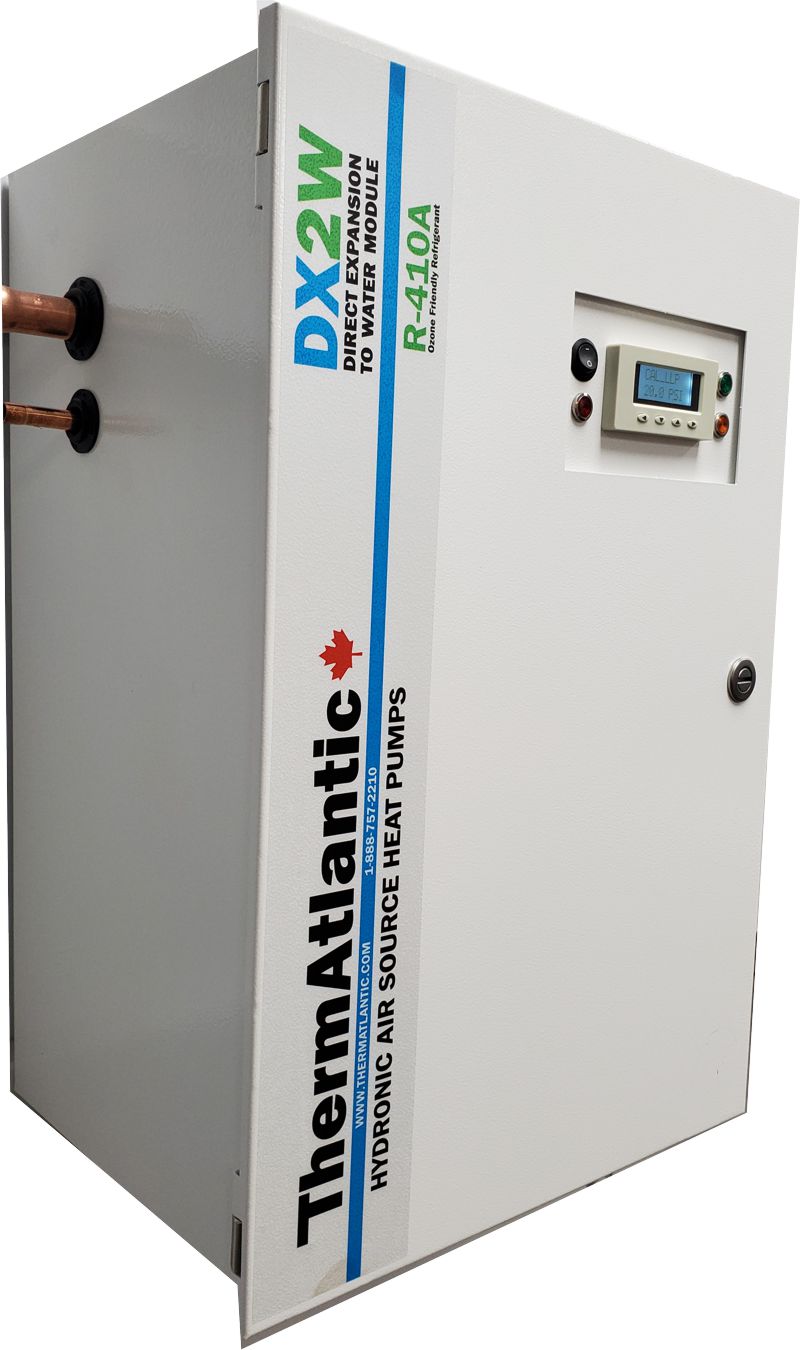Recent Posts
- » New Combi Tank for 4 Pipe and DHW Preheat Applications
- » DX2W-EX3 now includes support for Radiant Cooling, Biomass Boilers and Solar Heating
- » DX2W-3 Release offers Native Support for Cold Climate Inverters
- » Installation Highlight: Using two heat pumps in tandem in mid-sized project in Dartmouth, NS
- » ThermAtlantic Pioneers Hydronic Cascading Heat Pumps for DHW Production
DX2W-3 Release offers Native Support for Cold Climate Inverters
Posted on 9th Apr 2024
Cold Climate Inverters now Supported
ThermAtlantic's latest DX2W-EX3 series now offers native support for most cold climate inverters which extend their operating range down to -25°C in winter while extending heating capacity as much as 60% thanks to the Enhanced vapour injetion. The 3rd party heat pump outdoor units supported by ThermAtlantic now includes central split inverters with 24VAC thermostat support which include Gree Flexx models now being stocked by ThermAtlantic. Gree and Midea manufacture at least 80% of the cold climate inverters on the market here today under a dozen different brand names so any of them aimed at central splits with 24V support will work with the DX2W-EX3.
 |  |  |
Gree Flexx 3 & 5 Ton Outdoor Heat Pumps with DX2W-EX3 indoor unit
Controls Update
Installers will now have a choice of specifying whether outdoor units use O for Cooling or B for Heating, the later of which is now standard on most inverters. Unlike traditional North American made heat pumps which default to heating mode and need to be told to go into cooling mode, these newer models default to cooling and need to be told to go into heating mode instead.
Performance Results
Beta testers of the recently released DX2W-EX3 series using Gree Flexx 3 & 5 ton outdoor units provided ThermAtlantic with valuable performance data thanks to the company'scloud-based internet monitoring service. Over the past two winters, these installations have shown that using the latest EVI inverters not only extends the operating envelope down to -25°C but more importantly broaden the heating capacity by as much as 60% when compared to the previous generation of coventional heat pumps. For example, when most older models were putting out 9-10kW on a specific winter day, a new inverter in the same neighborohoud was putting out 15-16 kW. This translated into lower auxilliary backup balance points and less reliance on electric or gas boilers for backup on cold days.
Other Benefits
Working with these next generation cold climate EVI inverter heat pumps has shown that they are quieter outside, don't cause the lights to dim when they start-up slowly, tend not to short-cycle as easily and manage refrigeration charge issues intelligently. For example, with conventional heat pumps an over-charged system would trip out on high pressure when it got cold and an under-charged system would ice-up more quickly and trip out on high discharger temp repeatedly until eventually compressor might fail. The new inverters have very large liquid receivers which allow additional charge to accumulate without necessarily causing high pressure conditions. Under low refrigerant conditions they modulate compressor speed down to stay below dangerous discharge temperatures and can keep a system running down to a ridiculously low refrigreant level before shutting down on safety. With the DX2W-EX3's regrigeration analysis capabilities it is possible to see liquid sub-cooling and determine whether units are over or under charged in order to maximize performance and efficiency.
Inverters are the future
After two years of remote field trials across Canada and the USA, ThermAtlantic is now recommending that cold climate inverter heat pumps be used for most applications. However, installers still have the option of using conventional heat pumps and air conditioners if they choose - a practice still appropriate in rural areas where servicing the new models may prove to be more challenging than conventional models. With the DX2W-EX3 customers will have the flexibility to choose which technology to use outdoors thanks to ThermAtlantic's open standards approach to systems integration with third party products.
 Loading... Please wait...
Loading... Please wait...